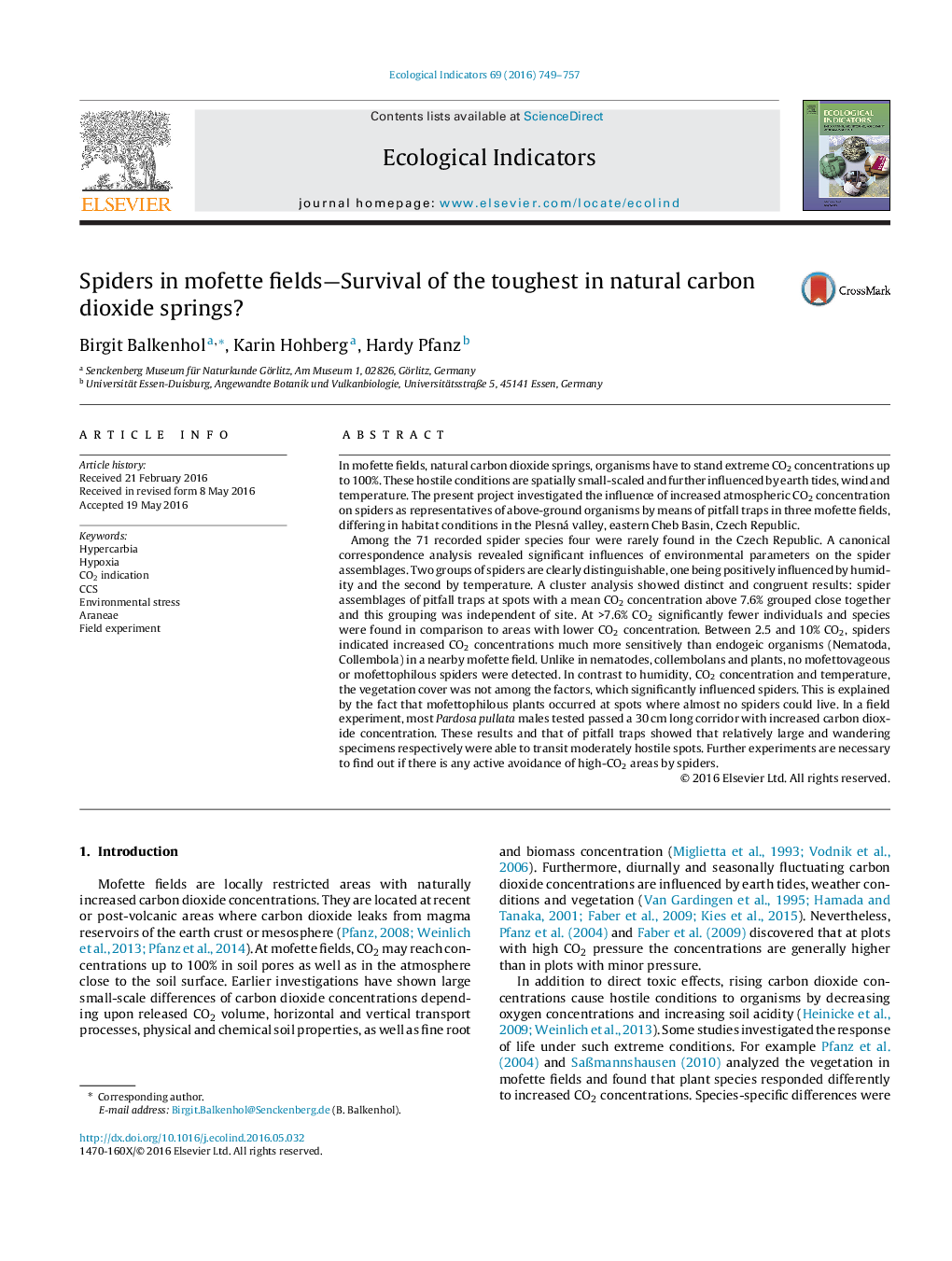| کد مقاله | کد نشریه | سال انتشار | مقاله انگلیسی | نسخه تمام متن |
|---|---|---|---|---|
| 6293340 | 1617133 | 2016 | 9 صفحه PDF | دانلود رایگان |
عنوان انگلیسی مقاله ISI
Spiders in mofette fields-Survival of the toughest in natural carbon dioxide springs?
ترجمه فارسی عنوان
عنکبوت در مفهوم میدان- زنده ماندن سخت ترین چشمه های دی اکسید کربن؟
دانلود مقاله + سفارش ترجمه
دانلود مقاله ISI انگلیسی
رایگان برای ایرانیان
کلمات کلیدی
موضوعات مرتبط
علوم زیستی و بیوفناوری
علوم کشاورزی و بیولوژیک
بوم شناسی، تکامل، رفتار و سامانه شناسی
چکیده انگلیسی
Among the 71 recorded spider species four were rarely found in the Czech Republic. A canonical correspondence analysis revealed significant influences of environmental parameters on the spider assemblages. Two groups of spiders are clearly distinguishable, one being positively influenced by humidity and the second by temperature. A cluster analysis showed distinct and congruent results: spider assemblages of pitfall traps at spots with a mean CO2 concentration above 7.6% grouped close together and this grouping was independent of site. At >7.6% CO2 significantly fewer individuals and species were found in comparison to areas with lower CO2 concentration. Between 2.5 and 10% CO2, spiders indicated increased CO2 concentrations much more sensitively than endogeic organisms (Nematoda, Collembola) in a nearby mofette field. Unlike in nematodes, collembolans and plants, no mofettovageous or mofettophilous spiders were detected. In contrast to humidity, CO2 concentration and temperature, the vegetation cover was not among the factors, which significantly influenced spiders. This is explained by the fact that mofettophilous plants occurred at spots where almost no spiders could live. In a field experiment, most Pardosa pullata males tested passed a 30Â cm long corridor with increased carbon dioxide concentration. These results and that of pitfall traps showed that relatively large and wandering specimens respectively were able to transit moderately hostile spots. Further experiments are necessary to find out if there is any active avoidance of high-CO2 areas by spiders.
ناشر
Database: Elsevier - ScienceDirect (ساینس دایرکت)
Journal: Ecological Indicators - Volume 69, October 2016, Pages 749-757
Journal: Ecological Indicators - Volume 69, October 2016, Pages 749-757
نویسندگان
Birgit Balkenhol, Karin Hohberg, Hardy Pfanz,
